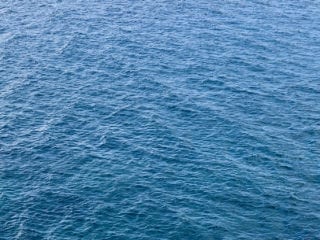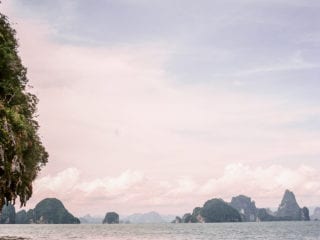As an American living abroad, it’s been wild to see the difference in the way the coronavirus outbreak has been handled here in Austria versus in the United States.
The threat of coronavirus became apparent in Austria around the same time it was clear in America that it was more than a seasonal flu. Austria shares a long border with the northern part of Italy, one of the early coronavirus hotspots. It was around this time that New York, in particular, began seeing an exponential spike in cases.
As comedian Kumail Nanjiani put it, we entered a “post-Hanks/Wilson” world, that week when Tom Hanks and Rita Wilson tested positive for COVID-19 and the NBA season abruptly came to a halt. Lockdowns and stay-at-home orders rapidly went into effect. The virus was suddenly real to all of us.
Lockdowns and stay-at-home orders rapidly went into effect. The virus was suddenly real to all of us.
Although COVID-19 was the central topic of discussion for weeks, in Austria we only had a few days’ notice that stores would be shutting down for the foreseeable future. People rushed to stock up groceries and toilet paper until we were reassured by the federal government that supermarkets would be the only stores staying open. Briefings began to circulate on how grocery store access would be limited to a few people at a time to help stop the spread of the virus.
There were even a few hours each day set aside for at-risk populations, particularly the elderly, to shop when there were fewer people in the stores. Yes, groceries were briefly picked over, but it was nothing compared to the photos of completely bare aisles in American grocery stores that started flooding my social media feeds.
We all stayed in starting mid-March. The Austrian government told us only to go for walks or essential shopping runs with the people we live with. Masks were required in the grocery store, and at the onset, they were even handing out free masks to make sure everyone was wearing one.
My husband and I started doing once-a-week grocery store runs. We don’t own a car, and we always walked to the store. So we’d bring home as much as we could carry.
Quarantine walks became an almost daily event for me. Listening to happy podcasts and getting fresh air helped keep my anxiety at bay. Some days, I would get overwhelmingly scared of how long this could last, but spending time outside helped.
Listening to happy podcasts and getting fresh air helped keep my anxiety at bay.
Two months later in mid-May was the first time I saw a friend. We met at a park for a socially distanced hangout. Some people in Austria had already been socializing much more, but I was slower and more careful to see my friends.
As case numbers went down and stayed down, Austria slowly reopened small businesses to let companies get back to work. (It was especially strange to see the Austrian prime minister talking about how the country would do this on CNN and how that response was different from President Trump’s back in America.) The Austrian government watched the case numbers closely. When the infection rate didn’t spike, restrictions loosened every couple of weeks.
European tourism even ramped up for the summer vacation season. Austria played it a bit loose in order to get some tourism revenue flowing, but now, as school has begun and the caseloads across the continent have risen again, Austria has put more precautions back in place.
I remember at my first social outing to the park in May, my friend (who’s from Canada) and I talked about how weird it felt to be socializing when people in our home countries were still in strict quarantine. Even in October, my in-laws in Texas were still in strict quarantine as the state reported approximately 5,000 new cases and 100 more deaths every day. To me, the difference in the approach to public safety between Austria and America is apparent.
Before coronavirus, I had a lot of travel plans for this year. In fact, I’ve still managed to travel a small amount by train. It feels weird to have visited new places when some of my family needs to stay at home for their own safety. I visited Ljubljana, Berlin, a town in southwest Germany where my brother lives, and took a quick visit to a wine region on the other side of Austria. Traveling on a train for more than 10 hours to and from Berlin and wearing a mask the entire time made me question the controversy over mask-wearing in the U.S.
There is an ethos across much of the European continent, though perhaps especially in Austria, of mutual responsibility. I believe that wearing a mask is neighborly, caring. The COVID-19 precautions have shown me how much the people of my adopted home prioritize caring for their neighbor and the understanding that this care for one another gives everyone more freedom.
The COVID-19 precautions have shown me how much the people of my adopted home prioritize caring for their neighbor.
Restrictions aren’t fun, but they are manageable if done together. I hope that we, as a global community, can take a note from Austria and learn about the power of unity and a collective response during times of crisis.
Have you ever lived abroad? What do you think living abroad during a pandemic would be like?
Image via Chris and Sarah Rhoads of We Are the Rhoads, Darling Issue No. 7











